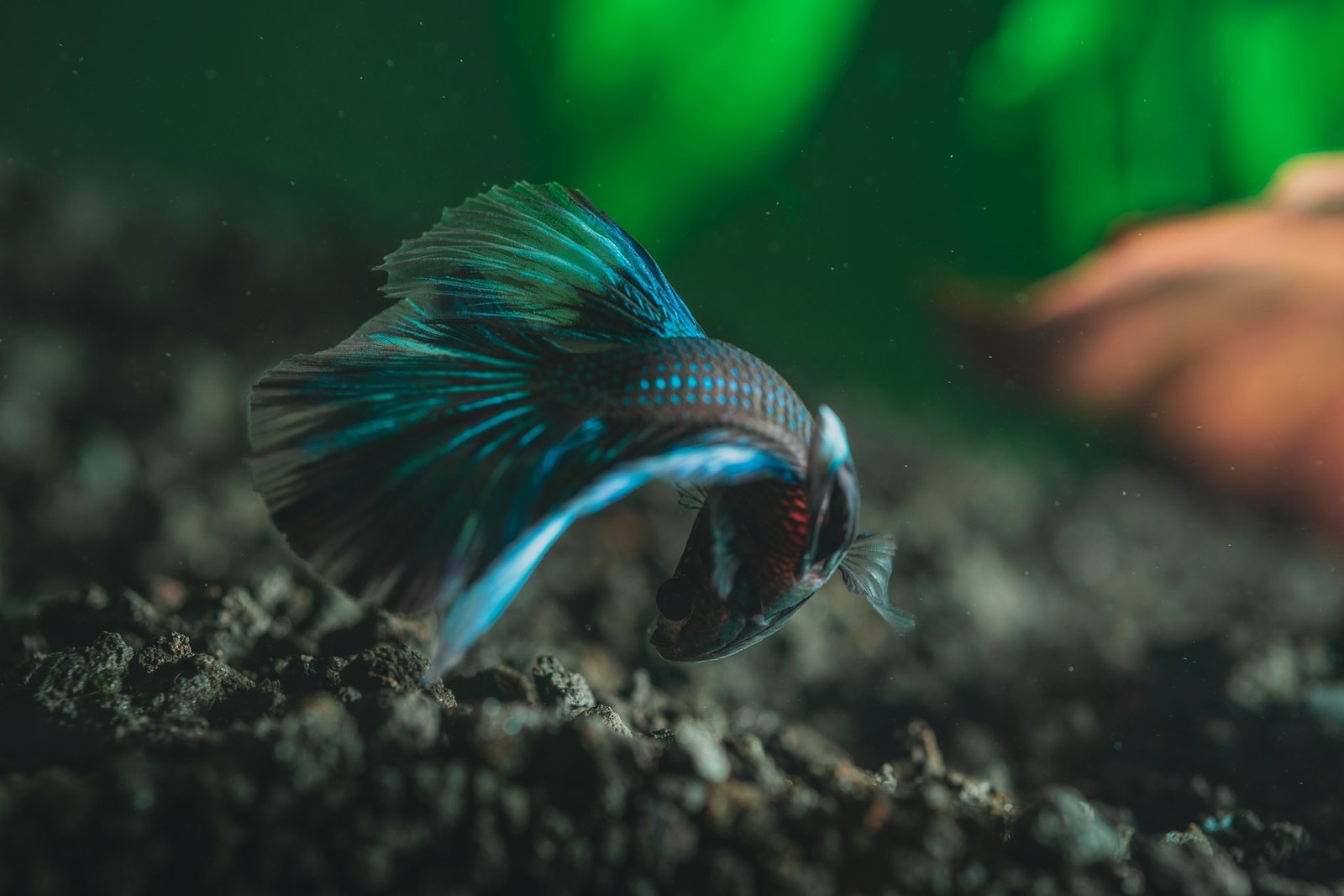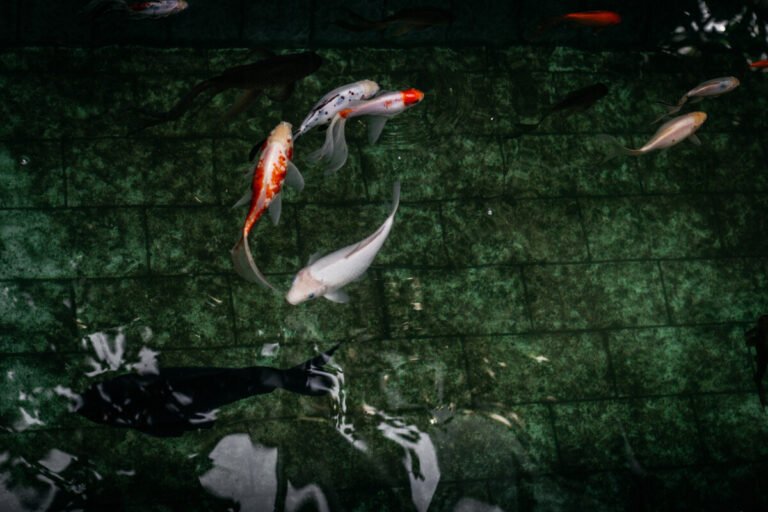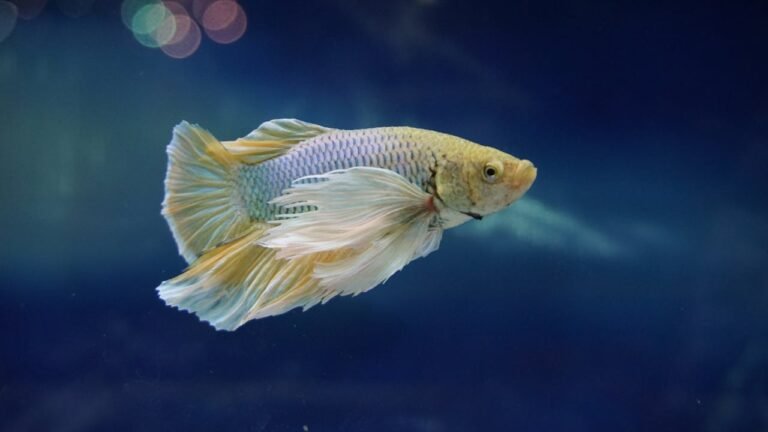Aquarium enthusiasts love betta fish, also known as Siamese fighting fish, because of their vibrant colors and unique personalities. But setting up a perfect tank for your betta requires you to consider its specific needs carefully. This guide will take you through all the necessary steps of creating an ideal aquatic home for your betta fish.
Betta fish tank requirements
Bettas are tropical fish that require certain water conditions to thrive. They like warm temperatures ranging from 76°F to 82°F (24°C – 28°C). Besides this, they need a pH range between 6.5 and 7.5 with moderate hardness levels of water too; failure to keep these parameters may lead to their poor health or even death.
Choosing the right tank size
The size of the tank is one of the most important factors in setting up a successful betta fish tank because it is the most crucial part for betta fish care. Although they can survive in small bowls or vases, these environments are far from being ideal and may cause health problems. The minimum recommended size for a single betta is 2.5 gallons, but it’s better if you can get a 5-gallon tank or larger. Larger tanks provide more swimming space and make it easier to maintain good water quality.
Importance of filtration
Filtration is very important in any aquarium including those with Betta fishes though they can survive without it since filters help remove waste materials from water thereby keeping it clean always. There are different types of filters such as:
- Hang-on-back (HOB) filters
- Sponge filters
- Undergravel filters
Each type has its pros and cons so you should research well before choosing one that suits your tank set up best as well as maintenance routine.
Tank ideas
- Creating an attractive betta fish tank can make you enjoy watching them more and also provide mental stimulation for the fish. Here are some ideas:
- Use natural decorations like driftwood, rocks, and live plants to mimic their natural habitat.
- Incorporate hiding spots and resting areas using caves, tunnels or betta leaves.
- Try different substrate types such as gravel, sand or planted aquarium soil.
- Add a background or aquarium backdrop to create depth and dimension.
Setting up a betta fish tank for two fish
- Bettas are known to be territorial but it is possible to keep two of them in the same tank under certain conditions:
- Provide at least 10 gallons of water per pair.
- Create visual barriers and lots of hiding spots to reduce aggression between them.
- Introduce both bettas into a new tank simultaneously so that they establish territories together rather than fighting over already claimed ones later on.
- Watch their behavior closely; if necessary separate them again until things calm down then reintroduce slowly while monitoring closely until they get used to living together peacefully without any signs of stress from either party involved.
Benefits of using a betta fish tank starter kit
For beginners in keeping Betta fishes, starter kits can save time and money since they come with everything needed. These usually include:
- A tank (usually 2.5 or 5 gallons)
- A filter
- A heater
- Basic decorations and substrate
Starter kits provide all the necessary items required hence ensuring that your Betta has an appropriate environment right from the start.
Tank options for betta fish – 5-gallon tanks
While smaller tanks can house a single betta, larger tanks offer more flexibility and opportunities for creating a vibrant aquatic ecosystem. A five-gallon tank is a great choice for one betta, as it allows the addition of live plants, decorations, and potentially a few compatible tank mates.
For those looking for something more elaborate, consider tanks of 10 gallons or larger. These bigger tanks open up the possibility of creating a community aquarium with different species of fish, plants, and decorations
Selecting suitable tank mates for your betta fish
Bettas can be kept alone but introducing compatible tank mates can add interest and activity to your aquarium. However, it’s important to choose species carefully as bettas can be aggressive towards certain fish. Some suitable tank mates for bettas include:
Peaceful community fish like tetras, rasboras or corydoras catfish
Small non-aggressive shrimp species
Snails (be mindful of their potential to reproduce rapidly)
Remember to provide plenty of hiding spots and closely monitor the tank for any signs of aggression or stress.
Betta fish tank with live plants
- Live plants not only add natural beauty to your betta fish tank but also provide numerous benefits. They help oxygenate the water, provide hiding spots and resting areas, and contribute to a balanced ecosystem. When selecting live plants for your betta tank consider:
- Low-light tolerant species such as java ferns, anubias and cryptocoryne
- Plants that can withstand warm water temperatures preferred by bettas
- Avoiding plants with sharp or rough leaves that could tear delicate betta fins
Best plants for betta fish and how to care for them
Here are some of the best live plant options for betta fish tanks along with tips on caring for them:
- Java Fern – Attach rhizome to driftwood or rocks, avoid burying in substrate.
- Anubias – Similar to java fern, attach rhizome to decor and avoid burying.
- Cryptocoryne – Plant crown just below substrate surface, provide root tabs for optimal growth.
- Moss Balls – These low-maintenance plants provide hiding spots and oxygenate the water.
- Floating Plants – Options like frogbit and dwarf water lettuce provide surface cover and oxygenation.
Ensure proper lighting, fertilization, and regular trimming to maintain healthy plant growth.
Ensuring proper filtration in your betta fish tank
Filtration is a critical component of a successful betta fish tank setup. It helps maintain water quality by removing waste, debris, and excess nutrients. There are several filtration options available, each with its own advantages and considerations:
Hang-on-back (HOB) Filters – Easy to install and maintain but can create strong currents that bettas may find challenging.
Sponge Filters – Gentle and suitable for bettas but require an air pump and regular cleaning.
Undergravel Filters – Provide biological filtration but can be difficult to clean and maintain.
Regardless of filter type, regular maintenance and cleaning are necessary for optimal performance and water quality.
Do betta fish need a filter? Understanding the importance
Bettas can live in unfiltered tanks for short periods, but if you want them to be healthy and happy in the long run, then yes – they do need a filter. Filters help remove waste and keep water clean so that you don’t have to change it as often. They also provide oxygenation and house beneficial bacteria for biological filtration.
Conclusion: Creating the perfect aquatic home for your betta fish
To set up the best tank possible for your betta fish, there are a few things you should take into consideration. Make sure that the tank is big enough, keep an eye on the water conditions, use appropriate filtration methods and add some decorations which will make their environment more interesting. Also, don’t forget about checking water parameters from time to time or watching out for any changes in behavior – these might indicate that something is wrong with their health.
Are you ready to create an amazing underwater world for your betta fish? If so,then let us know what and how you customized the tank for your beloved betta fishes in the comment section. So why wait? Start adding things to your dream tank today!




